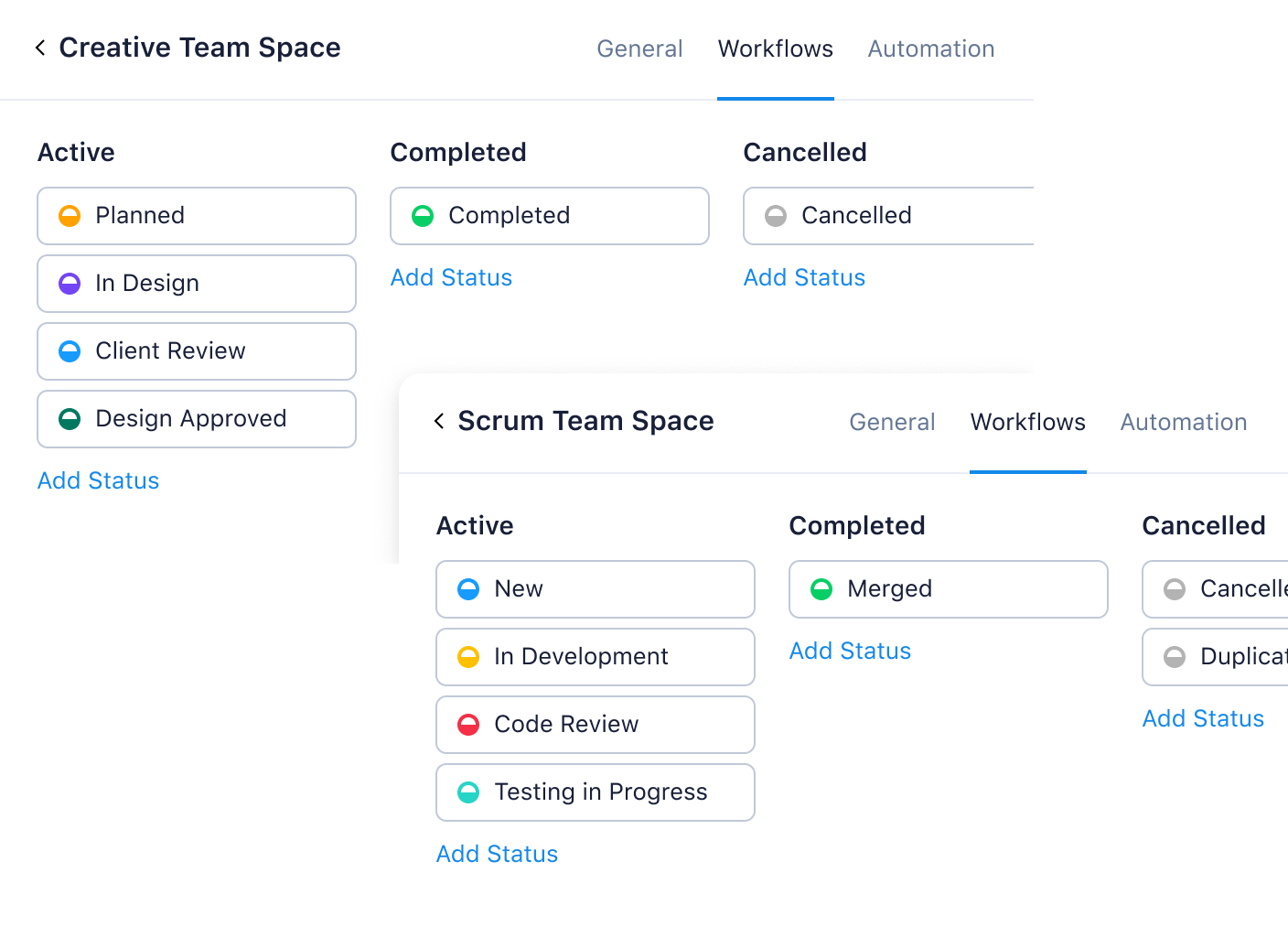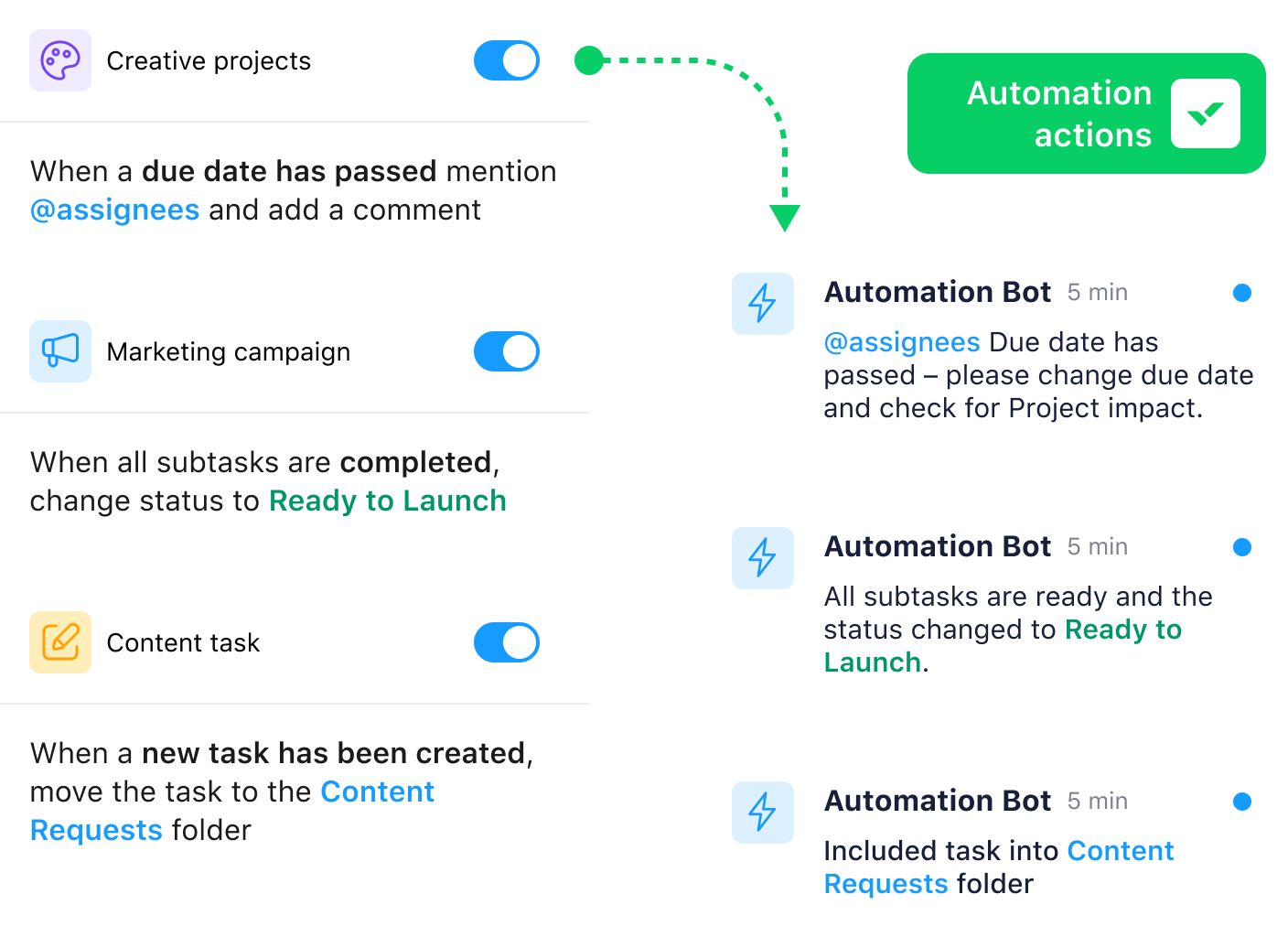- 1. What Is the Scrum Methodology?
- 2. Guide to Scrum Sprints
- 3. Scrum Sprint Planning
- 4. The Complete Guide to Scrum Ceremonies
- 5. The Ultimate Guide to Sprint Retrospectives
- 6. Daily Scrum Meetings
- 7. Scrum of Scrums Meeting
- 8. Introduction to Scrum Team and Roles
- 9. What Is a Scrum Product Owner?
- 10. What Is a Scrum Master?
- 11. Best Scrum Software and Tools for 2025
- 12. A Complete Guide to Scrum Boards
- 13. Scrum Glossary
- 14. FAQs
- 1. What Is the Scrum Methodology?
- 2. Guide to Scrum Sprints
- 3. Scrum Sprint Planning
- 4. The Complete Guide to Scrum Ceremonies
- 5. The Ultimate Guide to Sprint Retrospectives
- 6. Daily Scrum Meetings
- 7. Scrum of Scrums Meeting
- 8. Introduction to Scrum Team and Roles
- 9. What Is a Scrum Product Owner?
- 10. What Is a Scrum Master?
- 11. Best Scrum Software and Tools for 2025
- 12. A Complete Guide to Scrum Boards
- 13. Scrum Glossary
- 14. FAQs
Daily Scrum meetings are essential to the success of any Scrum sprint. They are part of a typical Scrum workflow and are used to track progress, discuss matters arising, and work through impediments.
These meetings are a key part of the Scrum framework, letting teams inspect and adapt regularly. They also align with Agile project management values, ensuring everyone stays on the same page.
In this Scrum guide section, I’ll offer tips and best practices for productive and successful daily Scrum meetings. Let’s begin with a comprehensive daily Scrum meeting definition.
What is a daily Scrum meeting?
A daily Scrum meeting (also known as a standup meeting) is a short, time-boxed meeting where members of the Scrum team gather to provide updates on what they worked on the previous day, what they plan to do today, and what (if any) impediments or issues they have encountered.
According to the Scrum Alliance, 85% of teams who use Scrum say it improved the quality of their work. The goal is to maintain momentum and ensure the team can inspect progress toward the sprint every single day. Daily standup meetings are one of the Scrum ceremonies and are a process built into Agile Scrum that encourages:
- Quick decision making
- Problem solving
- Self-organization
- Continuous improvement
Daily Scrum meetings are short and typically last 15 minutes. To reduce complexity, the Scrum daily standup meeting is ideally held at the same time and place every day. You can hold virtual daily calls for remote teams. This makes it easier to inspect progress toward the sprint goal. Some teams even hold the meeting standing up to emphasize its time sensitivity.
Ultimately, daily Scrum meetings enable teams to work through issues and constantly plan, reflect on, and synchronize activities that serve the sprint goal.
What is the goal of the daily Scrum meeting?
The goal of the daily Scrum meeting is to keep the team aligned, focused, and ready to adapt as work unfolds. This quick alignment helps the team see how tasks connect, stay aware of ongoing changes, and ensure everyone understands the day’s priorities.
When run properly, the daily Scrum meeting:
- Gives you a status report on what’s been done and what comes next
- Reinforces accountability by prompting each stakeholder to follow through on commitments
- Maintains forward momentum, ensuring tasks progress steadily each day
- Prevents small issues from escalating by identifying them early
Tip: Keep the meeting brief, focused, and relevant, whether it’s an in-person gathering or a virtual daily Scrum.
Who attends the daily Scrum meeting?
The development team, Scrum master, and product owner can attend the daily Scrum meeting. Primarily, the daily sprint meeting is a forum for the development team to discuss progress and priorities and also work through any blockers that slow them down.
The Scrum master facilitates the meeting and, though the product owner can be part of this meeting, they have a much smaller role to play. Wondering why? Unless the product owner has functional responsibilities within the project (as part of the development team, for example), they have less to offer during daily Scrum meetings.

Benefits of daily Scrum meetings
For Agile teams focused on cultivating supportive working environments, achieving the sprint goal, and ensuring efficient collaboration, daily Scrum meetings are very beneficial. When appropriately planned, daily Scrum meetings have the following benefits:
- Daily Scrum meetings help sync team progress: Team members can share the progress they’ve made toward the sprint goal, what they’re working on for the day, and get feedback on whether they are moving at a proper pace or not. They can also gain a clear understanding of what other team members are working on, ensuring clarity and visibility throughout the sprint.
- Daily Scrum meetings promote teamwork: During the session, everyone shares their progress and addresses whatever issues may have arisen. Scrum team members can help each other overcome challenges and employ Agile values and principles.
- Daily Scrum meetings can be a problem-solving platform: Run into an Agile impediment? Scrum teams can communicate their concerns or issues so that other members can share possible solutions.
Speaking of communication, I’m not the only one who’s noticed improvements when teams meet daily. Customers like Fitbit saw dramatic changes when it adopted Wrike. As Director of Creative Operations, Brynne Roberts, said:
“I’m here to facilitate the best work from the creative team and make an environment where their talent can flourish the most. Wrike helps me do that. We do everything, all day, in Wrike.”
Seeing results firsthand has been eye-opening. Fitbit’s marketing team cut 400 hours of meeting time per year just by using Wrike for feedback and reviews.
It also spent 50% less time on project management tasks related to timeline building and management. And it’s not just about saving hours — it’s about creating an environment where everyone feels supported and understood.
Daily Scrum meeting three questions and agenda
What is discussed in daily Scrum meetings? Every daily Scrum meeting revolves around three questions — also known as the daily Scrum questions. These questions are simple but necessary for every session:
- What did you do yesterday?
- What are you doing today?
- Is there any issue affecting the delivery of your tasks?
Members of the development team should endeavor to answer these three daily Scrum questions during the standup meeting. These questions should be a significant part of your daily Scrum agenda.
Common mistakes of daily Scrum meetings to avoid
Scrum meetings are an important meeting — we know that for sure. But, for it to be an effective meeting, the standup meeting must be run properly. Avoid the mistakes that can impact the effectiveness of your daily Scrum meeting. Below are some mistakes that teams make during their daily Scrum meetings that should be avoided.
- Tardiness: Standup meetings have a time-boxed period that is approximately 15 minutes. Team members should try to show up on time and be prepared to discuss their work and any impediments.
- Conversation monopoly: When a person has the floor, they should always stay on point and not veer off at the expense of everyone else. Everyone must speak to the team and shouldn’t exceed the time slot allocated to them.
- Secrecy: Team members should be transparent about any issues or impediments they’re encountering. Members should also do their best to limit negative feedback or present said feedback in a diplomatic way.
- Excessive detail: Avoid diving too deep into every user story element. The daily Scrum shouldn’t turn into a full status meeting analyzing the entire sprint backlog. Keep it brief so the team stays focused on the essentials.
Use Wrike to execute your Agile Scrum sprints
Now that I have answered the question, “What is a Scrum meeting”? Let me show you how you can implement Scrum meetings using project management software like Wrike. As I have already explained, daily Scrum meetings are vital to the success of every Scrum sprint. With Wrike, I’ve seen teams bring clarity to their sprint backlog, track user stories, and keep meetings short and focused.
I’ve also seen how Wrike supports rapid adaptation in fast-paced companies. Tactus, an innovative touch-screen maker, was able to shorten its Scrum period from a whole week down to just one day using Wrike. Its VP of Engineering, Curtis Ray, said:
“You almost can’t run a project anymore without something like this tool. You have to be so fluid and adaptable to meet the expectations of today’s market, investors, and employees.”
With Wrike, you can:
- Track your Agile Scrum goals, manage processes, and turn meeting items into actionable tasks
- Get a clear, real-time view of ongoing tasks, priorities, and progress with custom dashboards
- Visualize tasks as cards on a Scrum board to see what’s done, what’s in progress, and what’s next
- Monitor how much effort goes into each task and generate insights that guide better planning
- Communicate directly on tasks, share files, and receive updates all in one place
- Set up standard Scrum workflows and templates to ensure consistency, from backlog refinement to sprint planning
- Use automation to streamline recurring tasks and integrate with other tools your team relies on

Need a transparent, efficient, and adaptable daily standup process for your next Scrum event? Start your free Wrike trial today.

Alex Zhezherau
Alex is Wrike’s Product Director, with over 10 years of expertise in product management and business development. Known for his hands-on approach and strategic vision, he is well versed in various project management methodologies — including Agile, Scrum, and Kanban — and how Wrike’s features complement them. Alex is passionate about entrepreneurship and turning complex challenges into opportunities.

